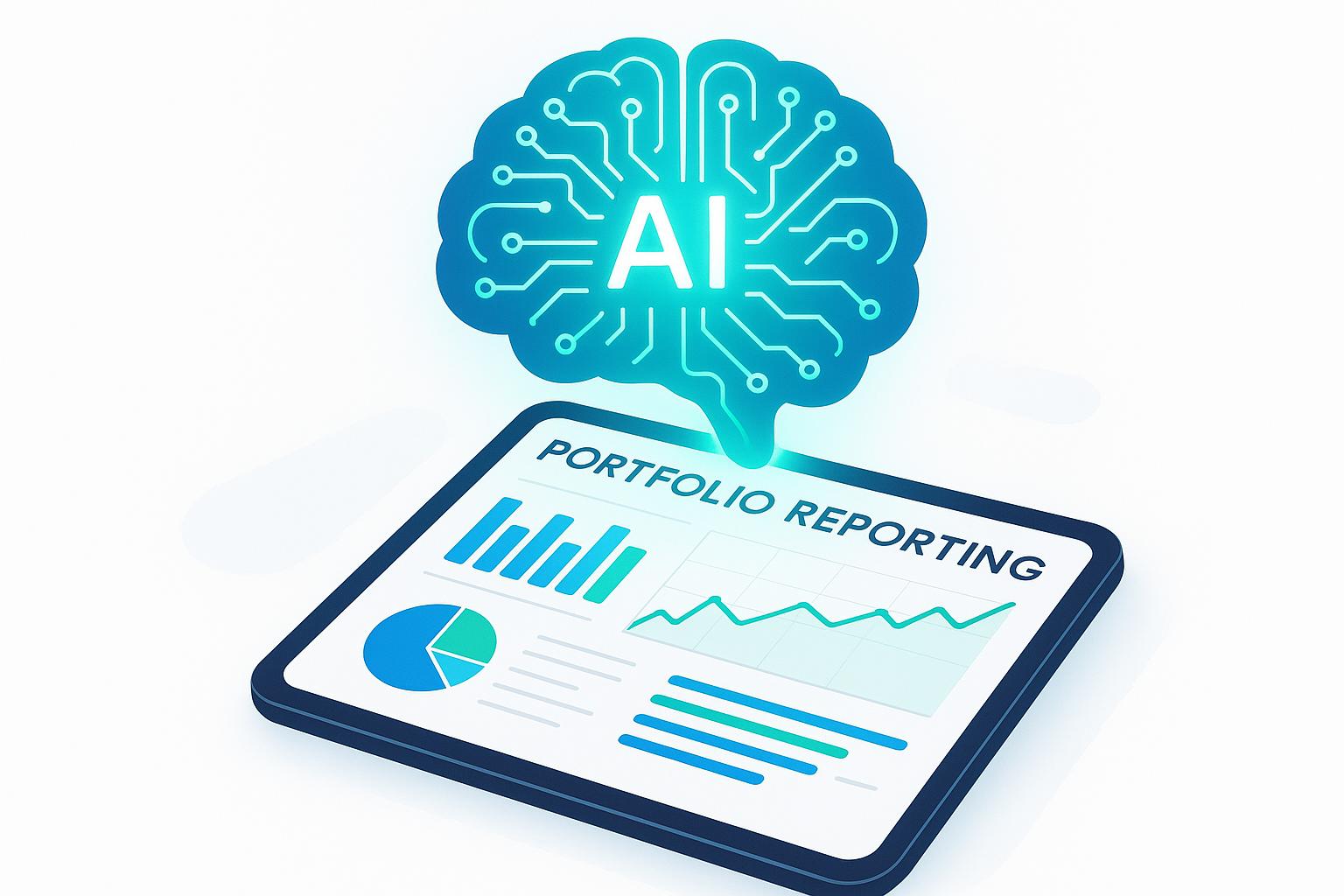Financial planning is essential for managing resources, making informed decisions, and supporting business growth. But should you rely on AI tools or manual methods? Here's a quick breakdown:
- AI-driven financial planning offers speed, accuracy, and scalability. It processes large datasets instantly, reduces errors, and adapts to growing needs, but lacks human intuition.
- Manual financial planning relies on human expertise for nuanced decisions, strategic thinking, and relationship-based tasks. However, it’s slower, more error-prone, and resource-intensive.
Quick Comparison
| Aspect | AI-Driven Planning | Manual Planning |
|---|---|---|
| Speed | Real-time analysis, instant updates | Takes days or weeks, slower updates |
| Accuracy | Precise, automated error detection | Prone to human error |
| Data Handling | Processes large datasets seamlessly | Limited by human capacity |
| Cost | Higher upfront cost, lower ongoing expenses | Lower initial cost, higher long-term costs |
| Scalability | Adapts easily to growth | Resource-heavy to scale |
| Human Judgment | Limited, algorithm-based decisions | Relies on expertise and intuition |
Bottom line: AI excels in efficiency and data handling, while manual methods shine in strategic, context-driven decisions. A hybrid approach often works best - use AI for routine tasks and human expertise for complex scenarios.
Robo-Advisor vs Traditional Advisor: Which One Suits You Best?
Differences Between AI-Driven and Manual Financial Planning
Financial planning has come a long way with the rise of AI technology. Here’s a breakdown of how AI-powered systems differ from traditional manual approaches in several key areas.
Speed and Efficiency
AI platforms can analyze massive datasets in seconds, delivering real-time insights and simulations. On the other hand, manual financial planning often takes days - or even weeks - because it involves time-intensive data gathering, analysis, and calculations by humans.
Accuracy and Error Rates
AI systems are highly precise, ensuring consistent calculations and eliminating common human errors like miskeyed data or formula mistakes. Manual methods, while overseen by humans, are more prone to errors, especially when dealing with intricate financial models or large datasets.
Handling Data and Scaling
| Feature | AI-Driven Planning | Manual Planning |
|---|---|---|
| Data Processing | Handles vast amounts easily | Limited by human capacity |
| Updates | Instant and continuous | Requires periodic manual input |
| Integration | Automatically combines sources | Manual compilation needed |
| Scalability | Adapts effortlessly to growth | Requires more staff as needs grow |
AI’s ability to scale and adapt to growing data needs far surpasses manual methods, which often demand additional resources to keep up.
Costs
Although AI systems may involve higher initial investments, they tend to save money in the long run by reducing labor costs and minimizing errors. Manual planning, however, comes with ongoing expenses like salaries, training, and the inefficiencies tied to repetitive tasks.
Automation vs. Human Judgment
AI is unmatched in speed and precision, but it can’t replace human intuition and context-based decision-making. Tasks requiring emotional intelligence or nuanced understanding of specific business situations still depend on human expertise. What AI does best is automate repetitive tasks, freeing up human advisors to focus on strategy and complex decisions.
These distinctions highlight the strengths and limitations of both AI-driven and manual financial planning, making it easier to evaluate which approach suits your needs.
sbb-itb-17e8ec9
Comparison Table: AI vs. Manual Financial Planning
To help decision-makers choose the most suitable financial planning method, let's break down the differences between AI-driven and manual approaches across key aspects.
Comparison Table Details
Here's a breakdown of how AI-driven and manual financial planning compare:
| Aspect | AI-Driven Financial Planning | Manual Financial Planning |
|---|---|---|
| Processing Speed | • Real-time analysis and updates • Plans created in minutes • Instant scenario modeling |
• Takes days or weeks to complete • Requires manual data entry • Updates are slow and labor-intensive |
| Accuracy | • Consistent and precise calculations • Automated error detection • Built-in validation tools |
• Prone to human error • Methodologies may vary • Relies on manual checks |
| Data Integration | • Automatically integrates data from multiple sources • Synchronizes in real-time • Handles large datasets seamlessly |
• Data must be compiled manually • Limited capacity for large datasets • Updates occur periodically |
| Cost Structure | • Higher initial investment but lower ongoing costs • Reduces the need for additional staff |
• Lower upfront cost but higher long-term expenses • Staffing costs grow with scale |
| Flexibility | • Scales easily with business growth • Adapts quickly to changes • Continuously improves through learning |
• Scaling is resource-heavy • Process updates require time and effort • Staff training needed for changes |
| Decision Support | • Leverages data analytics • Identifies patterns and trends |
• Relies on human expertise • Emphasizes critical thinking |
Platforms like Lucid Financials showcase how AI-driven solutions can tackle complex financial tasks in real-time, a stark contrast to manual methods that often take days to process similar workloads [1][2].
The main difference? AI thrives on large-scale data processing, while manual planning shines in scenarios where human judgment and expertise are irreplaceable.
These comparisons can help businesses align their financial planning approach with their operational needs and growth objectives. Exploring specific use cases for each method can further guide the decision-making process.
Use Cases for AI and Manual Financial Planning
Many businesses benefit from blending AI-powered tools with the expertise of manual financial planning. Knowing when to use each approach can help streamline financial planning processes.
When to Use AI-Driven Financial Planning
AI-based financial planning shines in situations that require processing large amounts of data quickly. For example, 77% of users can reforecast within a week using AI, compared to just 41% of those relying on manual methods [1].
Here are some common applications:
- Handling large datasets with real-time analysis for tasks like transactions, forecasting, and reporting
- Running complex scenario models and coordinating across departments
- Scaling operations quickly and automating financial adjustments
When Manual Financial Planning Works Best
Despite AI's capabilities, manual financial planning is irreplaceable in scenarios that call for human judgment and expertise.
Examples include:
- Strategic decisions like mergers, acquisitions, or partnerships
- Industry-specific planning that requires deep contextual knowledge
- Risk assessments where human intuition plays a key role
- Financial decisions built on relationships and trust
The best results often come from combining both approaches. AI systems are great for crunching numbers and delivering insights, while manual planning brings strategic thinking and emotional intelligence to the table [1][2].
For instance, a company might use AI tools to manage routine tasks like daily financial operations and data analysis, but rely on human expertise for long-term strategies and relationship-driven decisions. This hybrid approach ensures efficiency while maintaining the depth needed for complex decisions.
Conclusion: Selecting the Right Financial Planning Method
Key Differences at a Glance
Financial planning has seen major changes with the rise of AI technology. On one hand, AI stands out for its speed and data-driven capabilities. On the other, manual planning brings a level of personalized, context-aware advice that AI can't fully replicate.
Take platforms like Lucid Financials, for example. They showcase how AI simplifies financial management by offering real-time insights and automation - things manual methods can't easily provide. While AI tools are often less expensive to maintain, manual planning tends to come with higher ongoing fees. Still, both approaches have their own strengths, depending on what you're looking for.
Making the Right Choice
When deciding which method works best, consider these factors: cost, data processing abilities, and the role of human judgment.
| Factor | AI-Driven Planning | Manual Planning |
|---|---|---|
| Cost Efficiency | Lower management fees | Higher ongoing fees |
| Data Processing | Handles large datasets instantly | Limited by human capacity |
| Personal Touch | Automated responses | Builds deeper relationships |
| Risk Assessment | Algorithm-based analysis | Relies on experience |
Kevin Smallen, Chief Information Security Officer at PenChecks Trust, sums it up well:
"AI is transforming financial services, enhancing efficiency and decision-making" [1]
For startups and small businesses, the choice should depend on your specific needs and growth plans. A blended approach - using AI for efficiency while leveraging human expertise for nuanced decisions - can help manage financial complexities while aligning with your goals [2].


